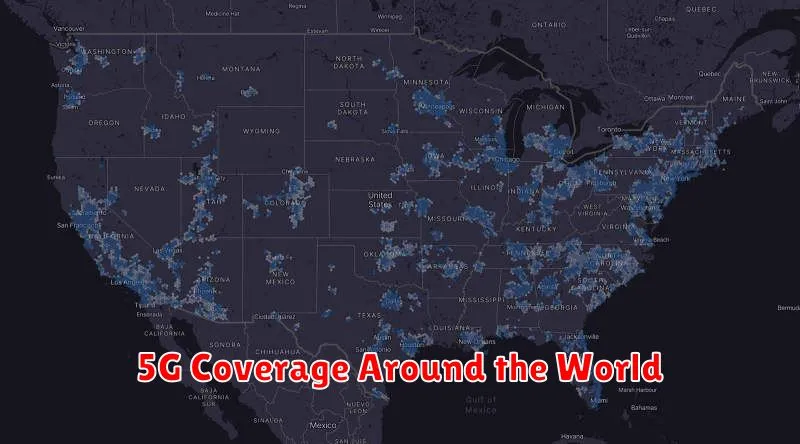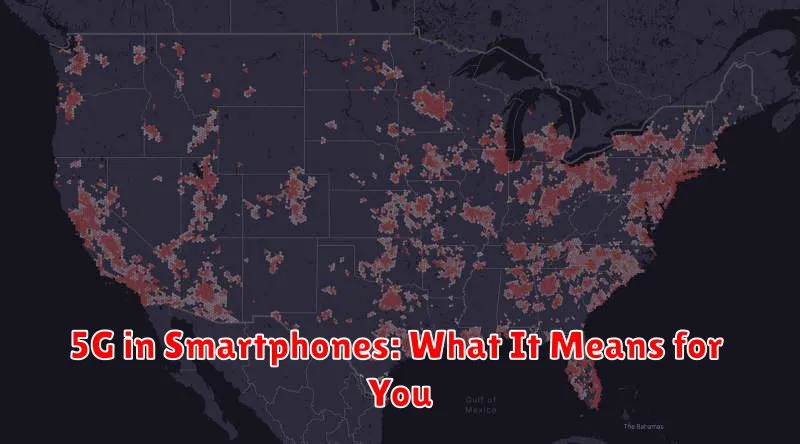5G is revolutionizing the way we use our smartphones, offering significantly faster speeds, lower latency, and increased network capacity. This transformative technology is not just an incremental upgrade; it’s a paradigm shift that unlocks a new realm of possibilities. From streaming high-definition videos seamlessly to experiencing immersive augmented reality and participating in lag-free mobile gaming, 5G in smartphones is reshaping our digital landscape. This article will delve into the core benefits of 5G and explore how it impacts your daily life, from communication and entertainment to productivity and beyond.
Understanding what 5G truly means for you requires looking beyond the technical jargon. This article demystifies the key features of 5G in smartphones, including the different 5G frequency bands (mmWave, sub-6 GHz) and their respective advantages. We will examine how 5G impacts battery life, explore the growing ecosystem of 5G-enabled devices and applications, and address common concerns about 5G technology. Whether you’re considering upgrading to a 5G smartphone or simply curious about the future of mobile connectivity, this article provides the essential information you need to navigate the 5G revolution.
What Is 5G Technology?
5G represents the fifth generation of wireless technology. It’s the successor to 4G LTE and promises significantly faster speeds, lower latency, and greater capacity.
This advancement is achieved through the use of higher radio frequencies than previous generations, allowing for more data transmission. 5G also utilizes new technologies like beamforming to focus signals directly to devices, improving efficiency and reducing interference.
Speed Comparison: 4G vs 5G
One of the most significant advantages of 5G is its superior speed compared to 4G. While 4G offers peak download speeds of around 100 Mbps, 5G can theoretically reach up to 20 Gbps. This significant jump in speed translates to much faster downloads, smoother streaming, and improved overall performance.
In real-world usage, users can expect 5G speeds to be considerably faster than 4G, even if they don’t reach the theoretical maximum. This increased speed makes activities like downloading large files, playing online games, and streaming high-definition videos significantly more efficient and enjoyable.
5G Coverage Around the World

5G deployment is an ongoing process, varying significantly across the globe. While many countries boast extensive 5G networks in major urban areas, others are still in the early stages of rollout. Availability also differs between mobile carriers within the same country.
Factors influencing 5G coverage include government regulations, infrastructure investment, and spectrum allocation. Generally, densely populated areas and technologically advanced nations tend to have more widespread 5G coverage. Consumers should consult their local carriers for specific information about 5G availability in their region.
Real-World Use Cases
5G’s increased speed and bandwidth unlock numerous possibilities beyond faster downloads. Enhanced Mobile Broadband (eMBB) delivers ultra-HD video streaming and lag-free gaming.
Beyond entertainment, 5G empowers augmented and virtual reality applications, transforming industries like healthcare and education. Imagine remote surgery guided by AR overlays or immersive VR training programs.
Fixed Wireless Access (FWA) leverages 5G to provide high-speed internet access to homes and businesses, particularly in areas with limited broadband infrastructure.
Battery Consumption and 5G
One common concern regarding 5G is its impact on battery life. Early implementations of 5G often resulted in increased power consumption compared to 4G. This is partly due to the higher frequencies used by 5G, which require more energy to transmit data. Additionally, the constant searching and switching between 4G and 5G networks in areas with mixed coverage could drain the battery more quickly.
However, improvements in 5G technology, such as more efficient modems and better network optimization, are helping to mitigate this issue. Furthermore, advancements in battery technology itself are also contributing to longer battery life in 5G smartphones.
5G and Mobile Gaming
5G’s low latency and high bandwidth are poised to revolutionize mobile gaming. Reduced lag translates to a more responsive and immersive gaming experience, crucial for competitive online games. High bandwidth allows for faster downloads of larger game files and supports richer, more complex game environments.
Cloud gaming will also greatly benefit. 5G facilitates seamless streaming of games directly to your device, eliminating the need for high-end hardware. This accessibility opens up a world of gaming possibilities for users with less powerful smartphones.
Streaming and Cloud Services
5G’s increased bandwidth and lower latency dramatically enhance streaming and cloud-based experiences. High-definition video streaming becomes seamless, even in 4K or higher resolutions. Buffering becomes a thing of the past, leading to smoother playback.
Cloud gaming also benefits significantly. The responsiveness required for complex games is now achievable, making cloud-based gaming platforms more viable. Real-time access to demanding applications and files stored in the cloud becomes more efficient and reliable.
Security Implications of 5G
While 5G offers significant advantages, it also introduces new security challenges. The shift from hardware-based network infrastructure to software-defined networking (SDN) increases vulnerability to software bugs and malicious attacks. The increased reliance on virtualization within 5G core networks creates new attack surfaces.
Additionally, the distributed nature of 5G networks, with more access points and edge computing, complicates security management. Ensuring consistent security policies across a wider and more complex network is crucial.
Finally, the significantly higher data speeds of 5G amplify the potential impact of successful attacks. Data breaches can occur much faster, leading to greater data loss in shorter periods.
Compatibility with Older Devices
If you’re currently using a 4G LTE phone, you won’t be able to access 5G networks directly with that device. 5G requires new hardware components, specifically a 5G-compatible modem. This means that older phones are inherently unable to connect to 5G, regardless of software updates.
Therefore, to experience the benefits of 5G, you will need to upgrade to a 5G-enabled smartphone. This is a key consideration when thinking about transitioning to the faster speeds and lower latency offered by 5G technology.
Is It Time to Upgrade?

Deciding whether to upgrade to a 5G-capable smartphone depends on several factors. Do you live in an area with good 5G coverage? If not, the benefits might not be noticeable. Consider your current phone’s performance. Is it struggling to keep up with your daily tasks? If so, an upgrade might be worthwhile regardless of 5G. Finally, consider your budget. 5G phones can be more expensive, so weigh the benefits against the cost.
Key Considerations:
- 5G Coverage in your area.
- Current phone’s performance.
- Your budget.

